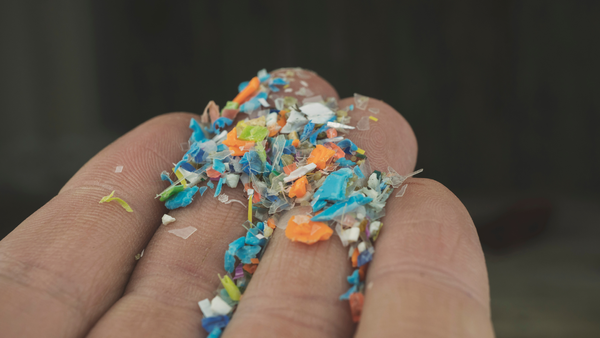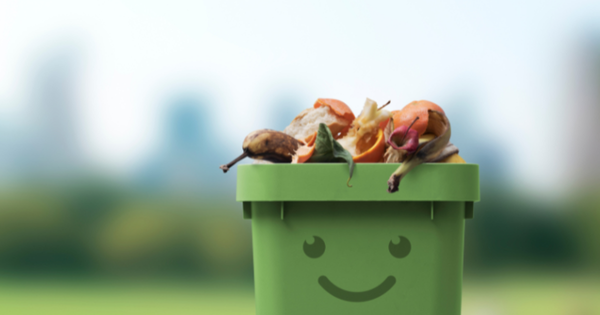The Rocky Road to Biopolymer Cost Parity
The last five years have seen both setbacks and innovation for biopolymers. Can they achieve cost parity with traditional plastics by 2030?

The promise of biopolymers is clear: less reliance on fossil fuels, breaking down safely into organic matter instead of microplastic pollution, and holding the potential to enable a truly biocircular materials economy.
Yet, for all their potential, a 2023 EMF report shows that, five years after making bold commitments, brands and retailers have managed to increase recyclable, compostable, and reusable packaging by a dismal 2%.
That's not a typo.
Two. Percent.
In a recent post, I covered how the lack of end-of-life pathways into compost heaps has been a roadblock to the mainstream uptake of biopolymers, and it looks like it will be for some time. As if that isn't enough, another monumental barrier is looming large over the nascent industry—cost.
A Boston Consulting Group report, also from 2022, suggested that while 80% of consumers claimed to be concerned about the environment, there is an almighty gulf of an 'intentions gap' (what you say you want is not what you end up doing) between that concern and actual purchasing behaviour. Only 20% said they believed their actions could make a difference, and only 1% to 7% actually paid a premium for a more sustainable product.
And that's a problem when bio-based polymers are currently anywhere from 150% to 300% more expensive than their petroleum-based counterparts.
The question has to be asked: Will this price gap close in the next five years? Or even the next decade?
Why are biopolymers still so expensive?
One of the primary drivers of biopolymers’ high cost is production scale.
Traditional plastics have benefited from a century of refinement. Massive infrastructure built around their production and distribution provides global economies of scale.
Biopolymers, by comparison, are still an emerging industry. Many biopolymer producers operate at a fraction of the capacity of traditional petrochemical plants within a fragmented supply chain, leading to higher per-unit costs.
Feedstock availability also plays a role. Petroleum is extracted at an enormous scale, and traditional plastics are part of a long-established petrochemical value chain utilising byproducts from oil and gas extraction, with their true costs externalised to society and the environment.
Meanwhile, biopolymers are mostly derived from agricultural inputs and renewable sources like vegetable oils and food waste. While this reduces dependence on fossil fuels, it introduces variability in sourcing, seasonality, and processing costs.
Feedstock science and innovation
Technological advancements are starting to challenge these constraints. New fermentation processes, synthetic biology approaches, and precision polymerisation techniques are reducing production costs and improving material performance.
PHAs (polyhydroxyalkanoates) are a fully bio-assimilating biopolymer that looks and feels like plastic (and can be moulded using standard plastic moulding processes). They are synthesised by bacteria that need a steady diet of sugars or nutrients from other organic feedstocks. Currently, much of this feedstock is derived from agricultural crops, which adds to production costs.
Innovations like wastewater-derived PHAs (a process being piloted at Virginia Tech) could significantly lower production costs. Researchers like Ruihong Zhang at UC Davis are developing ways to repurpose industrial food waste (such as cheese-making byproducts like whey) to feed PHA-producing bacteria at a lower cost. If successful, this could cut PHA production costs by up to 50%.
But, as we discovered in the first iteration of Phantm, PHA production can be expensive and unpredictable due to the complexity of the fermentation process. Microbial growth is tricky, conversion rates can be low, and extracting the final material isn’t easy. These factors can drive cost fluctuations.
To tackle this, scientists are developing tougher, contamination-resistant bacteria (like Halomonas) that thrive in extreme conditions, making production more efficient and scalable. This next-gen biotech approach could help stabilise costs and improve the viability of PHA as a plastic alternative.
Recent PHA developments that have broadened their application from rigid plastics and into applications for textiles and flexible plastics and films also increase their take-up and scalability potential.
The valley of death
Startups in this space face huge challenges. Even those who have been successful and developed great materials are going to have to resolve the valley of death. They have to raise the money, get their plant built, convince everyone to take that material and commit to using it... and continue to use it.
Brands control the demand, so they will have to be partners in guaranteeing demand so the materials makers can get financing. If the market and regulatory incentives aren't there, we are going to have all this great tech on one side, these big problems on the other, and a big valley in between.
Regulations are the catalyst we need for a level playing field
Regulations, however, may be the most significant bridge toward price competitiveness.
Government intervention could play a pivotal role in closing the cost gap. If substantial plastic packaging levies are introduced, the price of traditional plastics could increase by $1/kg over the next five years. This alone would bring biopolymers much closer to cost parity.
Additionally, Extended Producer Responsibility (EPR) policies—already gaining traction in the EU and select U.S. states—could further incentivise companies to shift toward compostable and recyclable materials. Under EPR, producers would be held accountable for the end-of-life impact of their packaging, making biopolymers a more attractive option.
The European Union has already introduced EPR policies, plastic levies, and landfill taxes that make fossil-based plastics less economically attractive. Meanwhile, governments worldwide are considering mandates that could tip the scales. If subsidies for bio-based materials increase or if carbon pricing mechanisms become more aggressive, the financial equation shifts. California’s SB 54, which aims to cut plastic waste by 25% over the next decade, is just one example of how regulatory pressure is reshaping the market.
Extended Producer Responsibility policies that direct 100% of the fees and levies towards investment in certification, collection and organic recycling infrastructure would also negate the end-of-life issue for these materials.
What are our chances?
So, will biopolymers reach cost parity with traditional plastics by 2030? The answer depends on the speed of innovation, the scale of production, and the regulatory environment.
Traditional plastic pricing is tied directly to fossil fuel markets, which are anything but stable. The price of crude oil swings due to geopolitical events, supply chain disruptions, and shifting global demand. When oil prices are low, biopolymers struggle to compete. When they rise, bio-based alternatives become more attractive. This fluctuation means cost parity is not a fixed target—it depends as much on petroleum markets as it does on advancements in bio-based materials.
But one thing is certain: the pressure to move away from fossil-based plastics isn’t letting up, and those who act early will be best positioned for the future.





